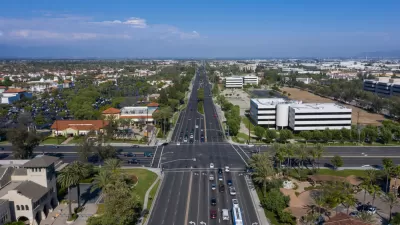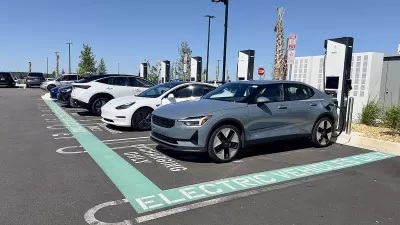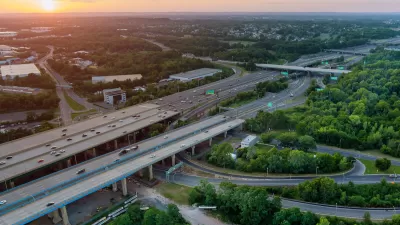The reasons for a ten-month moratorium on gas station development in the city of Rancho Cucamonga portend a major shift in transportation and land use priorities in the near future.

Steve Scauzillo reports from Rancho Cucamonga, a city located on the fringes of the Inland Empire in Southern California, where the City Council recently implemented a ten-month moratorium on new gas station development throughout the city.
The city has 34 gas stations, nearly twice as much as the neighboring city with the second-most gas stations, Fontana with 21. In Rancho Cucamonga, the number of gas stations works out to .69 service stations per square mile.
The newly implemented moratorium follows a study by city planners that produced three main findings, according to Scauzillo:
- There are a lot more in this All-America city than in any nearby city.
- Sales tax revenues from service stations are falling.
- Calls for police and fire services are rising, nearly doubling in four years.
The city credited the decline in gas tax revenue to increasing numbers of residents driving electric vehicles—a reality that has long been predicted as a reason for gas tax reforms.
According to Scauzillo, city planners will use the moratorium to generate more answers to questions like, "Should new gas stations be located near schools or parks where children play?"
Also, notes Scauzillo, most the city's gas stations are in the southwest and central areas of the city, "leading to environmental justice issues since these areas have more dense and older housing stocks."
FULL STORY: Why are there so many gas stations in Rancho Cucamonga?

Maui's Vacation Rental Debate Turns Ugly
Verbal attacks, misinformation campaigns and fistfights plague a high-stakes debate to convert thousands of vacation rentals into long-term housing.

Planetizen Federal Action Tracker
A weekly monitor of how Trump’s orders and actions are impacting planners and planning in America.

In Urban Planning, AI Prompting Could be the New Design Thinking
Creativity has long been key to great urban design. What if we see AI as our new creative partner?

King County Supportive Housing Program Offers Hope for Unhoused Residents
The county is taking a ‘Housing First’ approach that prioritizes getting people into housing, then offering wraparound supportive services.

Researchers Use AI to Get Clearer Picture of US Housing
Analysts are using artificial intelligence to supercharge their research by allowing them to comb through data faster. Though these AI tools can be error prone, they save time and housing researchers are optimistic about the future.

Making Shared Micromobility More Inclusive
Cities and shared mobility system operators can do more to include people with disabilities in planning and operations, per a new report.
Urban Design for Planners 1: Software Tools
This six-course series explores essential urban design concepts using open source software and equips planners with the tools they need to participate fully in the urban design process.
Planning for Universal Design
Learn the tools for implementing Universal Design in planning regulations.
planning NEXT
Appalachian Highlands Housing Partners
Mpact (founded as Rail~Volution)
City of Camden Redevelopment Agency
City of Astoria
City of Portland
City of Laramie





























